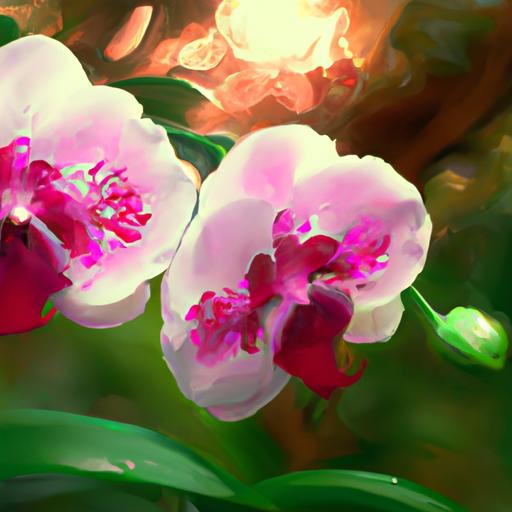Are you wondering if it’s possible for an orchid to bloom a second time? With the right conditions and care, it certainly is! In this article, we’ll discuss what orchids are, why they bloom once a year, and the conditions necessary for orchids to bloom a second time.
We’ll also cover how to water, give the right amount of light, fertilize, prune, and repot an orchid to make sure it has the best chance of blooming twice.
So, if you’re ready to learn how to make your orchid bloom a second time, read on!
Table of Contents
Short Answer
Yes, it is possible for orchids to bloom a second time.
Generally, orchids can bloom up to three times in a year depending on the species.
However, the blooms may not be as full or vibrant as the first bloom.
Careful attention to the orchid’s needs such as adequate light, humidity, and fertilizing can help ensure that the orchid is healthy enough to bloom again.
What is an Orchid?
Orchids are a type of flowering plant that are native to many tropical and sub-tropical regions of the world.
They are known for their unique and often intricate shapes and colors, and are prized by flower enthusiasts for their beauty.
Orchids are also very resilient, and have been able to survive in harsh environments, such as deserts and high altitudes.
There are thousands of different species of orchids, each with their own unique features and characteristics.
Generally speaking, orchids are perennial plants with long-lasting flowers, meaning that they can bloom repeatedly throughout the year.
However, some species may only flower once a year, and it can take a few months for the flowers to open.
Why Do Orchids Bloom Once a Year?

Orchids are an incredibly diverse species that can be found growing in a variety of climates and habitats.
While many orchids bloom year-round in their native habitats, most orchids grown in home gardens will only bloom once per year.
This is because orchids are sensitive to temperature and light, and require a certain combination of both to bloom.
For example, many orchids need a warm, humid environment in order to flower, and some only bloom during the winter months when temperatures are cooler.
Furthermore, orchids are photoperiodic, meaning that they flower only when exposed to a certain amount of sunlight each day.
Without the right combination of temperature and light, orchids will not bloom.
What Conditions Are Necessary for Orchids to Bloom a Second Time?
Orchids are beautiful and delicate flowers that can be difficult to keep alive, but with the right care and attention, they can be encouraged to bloom a second time.
To do so, the orchid must be given the right amount of water, light, and fertilizer.
Additionally, the orchid must be pruned and repotted in order to promote healthy growth.
When it comes to water, orchids need to be watered regularly, but not too frequently.
Watering an orchid too much can cause root rot and other issues.
The best way to water an orchid is to give it a good soaking once a week, and allow the soil to dry out completely between waterings.
For light, orchids prefer bright, indirect sunlight.
They should be kept out of direct sunlight, as this can cause the leaves to burn.
Orchids should also be kept away from any type of artificial light, as this can cause stunted growth.
When it comes to fertilizer, orchids need to be fed regularly to promote healthy growth.
A balanced fertilizer should be used, as too much of one nutrient can be harmful to the orchid.
Fertilizer should be applied every two weeks during the growing season.
Pruning and repotting an orchid is also an important part of the process.
Pruning helps to keep the plant healthy, and repotting helps to ensure that the orchid has enough room to grow.
Pruning should be done every year, and repotting should be done every two or three years.
By providing the right conditions and care, it is possible for orchids to bloom a second time.
With regular watering, bright light, balanced fertilizer, pruning, and repotting, orchids can be encouraged to bloom once again.
How to Water an Orchid

Watering an orchid is an important part of caring for this delicate flower so that it can bloom a second time.
It is important to remember that too much and too little water can be damaging to an orchid, so it is important to get the balance just right.
Generally, it is best to water an orchid once a week, making sure that the soil is moist but not soggy.
If the orchid is planted in a pot with good drainage, water should be added slowly until the water begins to come out of the drainage holes.
If the orchid is planted in a basket, it should be given a thorough soaking every week.
Additionally, the orchid should be misted with a spray bottle a few times a week.
This will help keep the leaves of the orchid hydrated and healthy.
How to Give an Orchid the Right Amount of Light
Giving an orchid the right amount of light is essential for getting it to bloom a second time.
Orchids need a good mix of both direct and indirect light in order to stay healthy and thrive.
Direct light should be provided for several hours a day in order to promote blooming, while indirect light should be provided for the rest of the day.
When providing direct light, make sure to place the orchid in an area that does not receive too much heat.
If the orchid is receiving too much direct sunlight, it can become damaged and not bloom a second time.
Additionally, orchids should be placed in an area that receives plenty of indirect light, such as a window sill or a table near a well-lit area.
This will ensure that the orchid is receiving enough light to encourage healthy growth and a second blooming.
How to Fertilize an Orchid

When it comes to encouraging an orchid to bloom a second time, fertilization plays a major role.
The right type and quantity of fertilizer can help the orchid to grow and develop healthy blooms.
When fertilizing an orchid, it is important to use a balanced fertilizer specifically designed for orchids.
This type of fertilizer typically contains a blend of nitrogen, phosphorus, and potassium, which are all essential for the plants growth and development.
Additionally, the fertilizer should be diluted to half of the recommended strength so as not to burn the orchid.
When applying the fertilizer, it should be done in small doses, as too much fertilizer can damage the orchid.
The fertilizer should be applied every one to two weeks, or according to the instructions on the fertilizer packaging.
It is also important to remember to flush the orchid with clear water after each fertilizer application.
This will help to remove any excess fertilizer and prevent it from building up in the soil.
Finally, it is important to note that fertilization should be done during the orchids active growth period, which is typically in the spring and summer months.
Fertilizing the orchid during the winter months can be harmful, as the orchid will not be actively growing and will not be able to absorb the nutrients.
With the right type and quantity of fertilizer, an orchid can be encouraged to bloom a second time.
Pruning and Repotting an Orchid
Pruning and repotting an orchid is important for encouraging a second blooming.
Pruning helps to remove old, dead, and diseased leaves and flower stems, allowing the plant to focus its energy on growing new buds and blooms.
Additionally, pruning helps to create a more aesthetically pleasing shape for the orchid.
Repotting is necessary for providing the orchid with fresh soil and a larger pot, which helps to promote better drainage and aeration.
This also gives the orchid more room to grow, and allows for more efficient absorption of nutrients.
When repotting, it is important to use a potting mix specifically designed for orchids, as this will help to ensure that the orchid has the right balance of nutrients.
Additionally, orchids should be repotted every two to three years to ensure that the potting mix has not become compacted.
With proper pruning and repotting, orchids can be encouraged to bloom a second time.
Final Thoughts
Orchids are beautiful and delicate flowers that can be tricky to keep alive, but with the right care and attention, it is possible to encourage them to bloom a second time.
By understanding the conditions necessary for orchids to bloom a second time and implementing the right techniques for watering, light, fertilizing, pruning, and repotting, you can enjoy the beauty of orchids all year long.
So, take the time to learn the proper care techniques and you can have beautiful orchids blooming in your home all year round!

